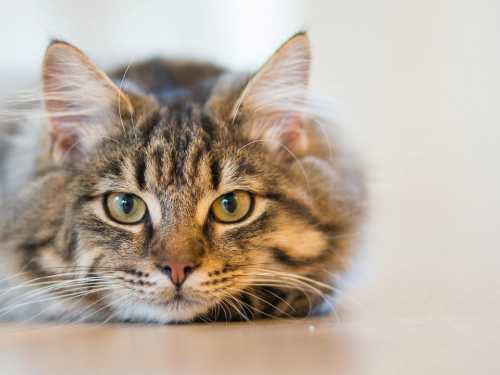
Cats enrich our lives with their presence, but their behavior can sometimes be surprising and even irritating to their owners. The key to a harmonious relationship with a furry pet lies in understanding its nature and instincts. By realizing that behind apparent misdeeds lie natural needs, we will be able not only to avoid unnecessary conflicts, but also to create a comfortable environment for living together.
They are not just cute furry friends, but animals with complex instincts that have lived in the wild for millennia. Their “problem” is often that they live in a human world that does not always meet their biological needs. Understanding these instincts is not indulgence, but a way to solve the problem, because punishing cats for instinctive behavior is counterproductive, causes stress in the animal and destroys trust. Instead, we need to redirect or provide alternatives.
In this article, we will look at the five most common cat habits that often cause owners' discontent: jumping on furniture, eating houseplants, scratching furniture, being active at night, and drinking from the owner's cup.
Conquering Heights: Why Do Cats Jump on Furniture?
Cats’ desire to climb higher is not just a whim or a desire to anger their owners. It is a deep-rooted instinct inherited from their wild ancestors. For cats, height is not only a means of observation, but also an important element of social hierarchy and stress management. In multi-cat households, this allows weaker animals to feel safe and stronger ones to demonstrate dominance without aggression. High places serve as “refugees” where cats can retreat when they feel overwhelmed or need a break from other pets or children. In addition, a cat’s sudden need for height can indicate stress or changes in their environment, such as the arrival of a new family member or another animal.
Instead of fighting this natural need, it is better to direct it in the right direction:
- Install special cat shelves on the walls.
- Purchase a tall cat enclosure with multiple levels.
- Provide your cat with a safe place on the windowsill.
- Remove fragile objects from upper surfaces.
By creating safe heights for your cat, you will satisfy their need to look around and reduce the risk of damaging furniture or valuables.
Green Diet: Why Cats Eat Houseplants
Cats eating plants can have several reasons:
- Instinctive behavior: In nature, cats sometimes eat grass to clear their stomachs.
- Curiosity and play: Young cats may chew plants out of interest.
- Lack of fiber in the diet.
- Attractive smell or texture of leaves.
- Eating plants can be a manifestation of boredom, anxiety, or even Pick's syndrome (eating inedible objects) due to nutrient deficiencies.
It is important to remember that many houseplants contain calcium oxalates, saponins or alkaloids, which can cause gastrointestinal irritation, kidney failure or even heart problems. Owners often do not realize how long the list of dangerous plants is.
To protect your pet and preserve your plants:
- Study the list of house flowers that are safe for cats.
- Place plants in inaccessible places or use hanging pots.
- Grow special “cat grass” for your pet.
- Provide your cat with toys and entertainment to distract him from the plants.
Sharp claws: the need to scratch furniture
Scratching is not an act of vandalism, but a vital process for a cat:
- Removing the dead outer layer of the claws.
- Muscle stretching.
- Marking territory (leaving visual and pheromone marks).
- Emotional release.
Scratching is also a key element in maintaining a cat's physical health, ensuring flexibility in joints and back muscles. Owners often fail to take into account that cats have individual preferences for scratching angles (vertical, horizontal, inclined) and materials (sisal, cardboard, wood, carpet). Lack of opportunities to scratch can lead to stress, destructive behavior and even aggression, as the cat cannot satisfy its natural need.
To save furniture and satisfy your cat's need:
- Install a variety of scratching posts (vertical, horizontal, made of different materials).
- Place scratching posts near your cat's favorite places.
- Encourage the use of scratching posts with treats and petting.
- Use special sprays that attract cats to the scratching post.
Nightlife: Why are cats so active at night?
This is due to the following factors:
- Evolutionary heritage (hunting for rodents active at this time).
- Sharper night vision compared to humans.
- Adaptation to the home lifestyle (sleeping during the day when the owners are not at home).
Cats are crepuscular predators, meaning their peak activity is at dawn and dusk, rather than at night. However, domestic cats often adapt their routines to their owners' rhythms, sleeping when their humans are busy and waking when they are resting. Owners often reinforce nocturnal activity by responding to their cat's attempts to wake them (for example, by getting up to feed or play), which reinforces the unwanted behavior. Chronic sleep deprivation can negatively impact both human and cat health.
To ensure a restful sleep for yourself and not restrict your cat's natural behavior:
- Arrange active games before bedtime to tire out your pet.
- Feed your cat before going to bed (a well-fed pet tends to rest).
- Create a cozy place for your cat to sleep in another room.
- Ignore your cat's attempts to wake you up so as not to reinforce this behavior.
Drinking from the host's cup
Cats may prefer your bowl because of the quality of the water (lack of chlorine, filtration), its temperature, or even because the cat's bowl causes discomfort (for example, because of the rubbing of whiskers on the edge of the bowl – so-called “whisker fatigue”). It may also be attracted to the moving surface of the water if you have recently drunk. It is important to remember that insufficient water intake can lead to serious health problems, such as chronic kidney disease or urolithiasis, so encouraging drinking is key.
Also, when a cat drinks from your cup, it may be due to:
- An interest in “human” things.
- The desire for social interaction (imitation of the owner).
To wean your cat from drinking from your containers:
- Provide several sources of fresh water in different places around the house.
- Use cat fountains that simulate running water.
- Change the water in your cat's bowl regularly.
- Experiment with different types of bowls (ceramic, stainless steel, etc.).
Understanding and accepting your cat's natural needs is key to a harmonious relationship. By creating an environment that takes your cat's instincts into account, you will ensure that both you and your furry friend are comfortable.





